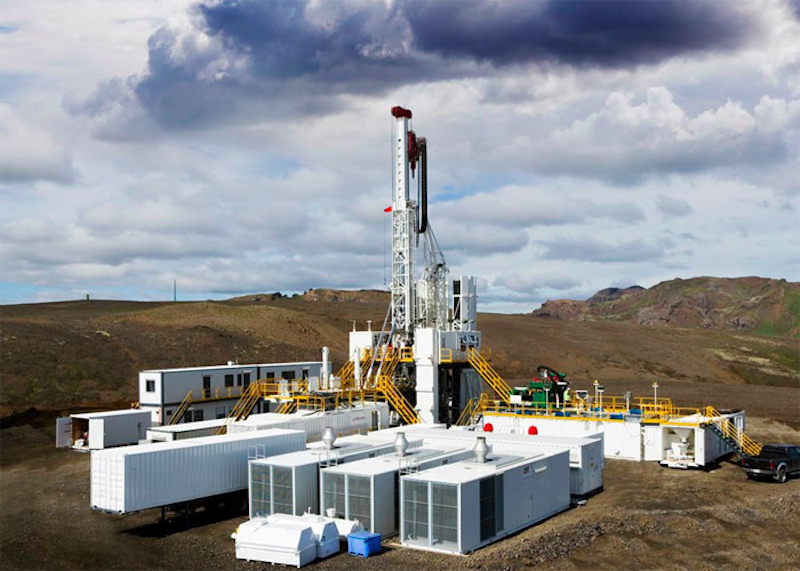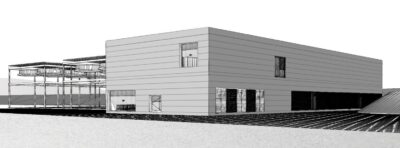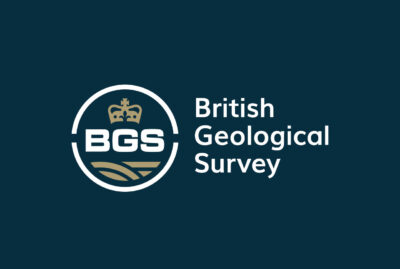Iceland Drilling, GeoDrill project – advancing geothermal tech
Part of the EU-funded GeoDrill project looking to advance drilling technology, Iceland Drilling describes the particular need to drastically reduce the cost of drilling to large depths.
Funded under the European Union’s Horizon 2020 research and innovation programme, the European GeoDrill project aims to develop “holistic” drilling technologies that have the potential to drastically reduce the cost of drilling to large depths (5km or more) and at high temperatures (250 degrees C or more).
The project was kicked off in 2019 and has made some significant advancements in development of innovative materials and coatings with potential to prolong lifetime of drilling components, sensors and prototypes of the novel mud hammer.
There are 12 partners part of the project from companies across Europe in Spain, Italy, France, Germany, the UK, Norway and Iceland.
In an article Icelandic company Iceland Drilling (in Icelandic called “Jardboranir”) talks about the project and the company.
With global growth in population, increasing energy demands and environmental demands for energy transition from fossil fuels to renewable resources, geothermal energy will become a more important source of base heat and electricity generation than in the past. Heating of houses around the world is generally created with fossil fuels whether by gas, oil, wood, coal or electricity produced by fossil fuels.
Iceland recognized this problem many decades ago and the country changed its ways as the supply of fossil fuels made for very high energy cost and of course the visible thick smog. In 1945, Jardboranir was formed to explore the potential of the natural resource and use this hot water and steam for heating and later production of electricity. This made Iceland one of the first countries to use the potential of the earths heat commercially for district heating on a large scale with 90% of houses being heated with a district geothermal heating system.
After Iceland fulfilled its dream to become a nation no longer dependent on fossil fuel for reliable heating of homes and business Jardboranir started offering its expertise it had gained with decades of drilling for water and steam temperatures above 250 deg C and assist to countries to harness this renewable and reliable natural energy source.
Basic challenge for drilling – drill a hole as economically and safely as possible, on time and budget
Throughout the last 100 years the drilling industry has seen a lot of development and new technologies introduced. However, the basic challenges have always been the same, to drill a hole as economically and safely as possible, on time and budget.
Every project that has been brought to fulfillment is based on geographical location, market potential and consumers are general based on known facts and thus the risk of investment can be accurately evaluated. For example, the location of the project near a city will have a large potential of customers and more likely an energy provider has already given an interest in purchasing the heat if the developer is not already an energy provider.
The challenges come when or rather where the location of the reservoirs is chosen, this is a science mixed with an artistic nature of evaluating rocks and interpreting seismic data logs to “guesstimate” the location of subsurface aquifers hundreds or even thousands of meters below the surface. Then based on what is thought to be a suitable target location a well is drilled to prove or otherwise the validity of the target location.
Drilling this hole is not cheap, nor can it be quickly performed, each location has several challenges that need to be overcome. One of these challenge areas is the speed at which the drilling can be performed or as known in the industry the “Rate of Penetration (ROP)”. As many will realize this is very much down to how hard the formation or rock is and the drill bit chosen to cut or grind the formation.
Very basically using a motor at the top of the pipe know as a top drive today or many years ago the kelly, the drill rods are turned and then the drill bit at the bottom rotates which cuts or grinds the formation to produce a hole. The basic principle of this has not changed in more than 100 years. Roller cone and fixed cutter drill bits have been improved throughout the years with millions of dollars and hours invested into improving the life span and efficiency of these but at the end of the day this is still the same basic practice as started decades ago. Drilling ROPs depend on the rock to be cut or crushed can be from 10´s of meters per hour to less than 1 meter per hour. Which, when we look at the hole to be drilled, may be anything from a few hundred to a few thousands of meters, can result in very long drilling times. This together with the wear and tear of the drill bit and components caused by the erosion and friction created by the drilling equipment rubbing against the newly created hole resulting in the whole drill pipe needing to be removed from the hole with the drill bit and the damaged parts replaced and then everything, with new components, run back into the hole to continue drilling. Obviously, the less time needed to replace worn or damaged components the more time can be spent drilling and thus the more efficient the operation becomes.
Iceland Drilling is excited being a member of the Geo-Drill consortium, a group of various companies from around Europe with out of the box thinking and new ideas from different areas of industry as well as research and design together with inventors and drilling experts.
All parties have a single goal to improve the drilling efficiency and reduce wear through innovative ideas such as a new design of fluid switch to be integrated into a fluidic hammer to drastically increase ROP in hard formations together with technological coatings to reduce friction and wear increasing the life span of equipment and improve efficiency of fluid transfer. Hammer or percussion drilling is in itself not new by any means and its first use dates back far before the 100-year history of today’s drilling methods. Similar technology is used today on a smaller scale however the reason for its shortcoming is the very short life span and reliability of the equipment when used, although when used, has repeatedly shown huge increases in ROP in almost every formation drilled albeit for short periods of time.
The technology being designed and tested by GeoDrill aim to greatly increase in the usable life span of the equipment allowing deep holes to be drilled in considerably less time resulting in the cost of drilling being reduced and thus the financial risk of failure to find sub surface aquifers less of a hurdle for the development of geothermal energy. This together with technology such as Graphene coating and down hole sensors will all provide a package to improve the geothermal development by reducing risk and cost of failures allowing bore holes to be drilled faster, safer, and more efficiently.
Iceland Drilling is looking forward to the development and “game changing” technology that will come out from these various areas of innovation to improve the geothermal potential globally.
Check out this webinar of the project on “Why Geothermal is a Hot Topic”.
Source: GeoDrill Project


















